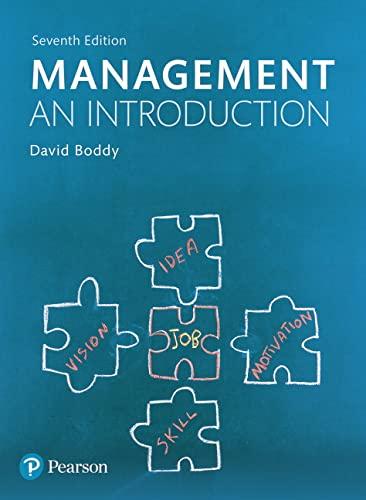Question
This is a Discussion Question from my MGMT-533 course. The book is Business: Its Legal, Ethical, and Global Environment.I would like to get you're opinion
This is a Discussion Question from my MGMT-533 course. The book is Business: Its Legal, Ethical, and Global Environment.I would like to get you're opinion on a topic. No right or wrong answer, just legal, ethical debate, using ethical theory and law.
Many employers are ranking employees, or placingthem in buckets as it is commonly called, as part of their annual performance evaluations. For example, Ford Motor Company, when it used this system, had 18,000 managers who were grouped into sets of 30 to 50. Of each group, 10 percent must be assigned an A grade, 80 percent must be assigned a B grade, and10 percent must be given a C grade. Those with the bottom grades are then eased out of the company. Those with a C grade cannot be given a pay raise, and those with a C grade for two years in a row are demoted or terminated. No exceptions are made for any of the groups, but Ford did cut back on the C requirement to 5 percent in 2001 and changed the system in 2003.Other companies with grading systems include Intel and Sun Microsystems.Cisco Systems has established a goal of getting rid of 1 of every 20 employees, with the purpose of terminating employees who are given substandard performance evaluations.GE has a 207010 plan for ranking employees. GE follows a carrot approach in that it rewards the top 20 percent so well that few ever leave the company. GE uses the 10 percent group to terminate employees, and it terminates about 8,000 management and professional employees each year. Former GE CEO Jack Welch noted that employees in the 10 percent bottom group would end up leaving the company anyway because they are unhappy in not performing, and GE just makes the inevitable decision for them early.Workers rights groups call the systems inhumane. Some say that instead of motivating employees to do better, the result is that they are demoralized and do worse or leave the company.
Do these systems violate any laws? Are they a mandatory collective bargaining issue? Are you comfortablewith them from the perspective of business ethics? Jennings, Marianne M. (2014-01-01). Business: Its Legal, Ethical, and Global Environment (Page 693). South-Western College Pub. Kindle Edition.
Step by Step Solution
There are 3 Steps involved in it
Step: 1

Get Instant Access to Expert-Tailored Solutions
See step-by-step solutions with expert insights and AI powered tools for academic success
Step: 2

Step: 3

Ace Your Homework with AI
Get the answers you need in no time with our AI-driven, step-by-step assistance
Get Started


